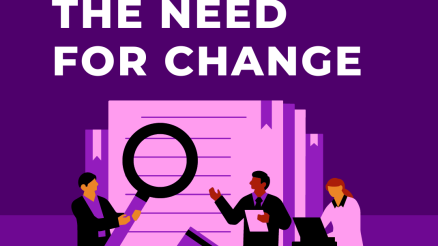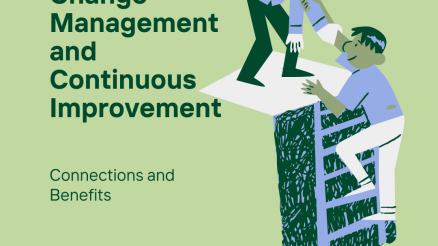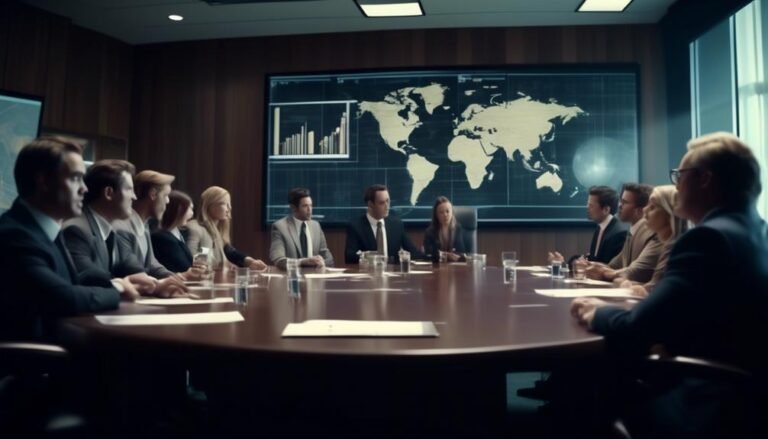Unilever Change Management Case Study
In today’s fast-paced business environment, change is inevitable.
Companies need to evolve and adapt to remain competitive, but managing change is not an easy task. Effective change management is crucial to the success of any organizational transformation, as it ensures that the changes are implemented smoothly and effectively.
In this blog post, we will examine a case study of change management at Unilever, one of the world’s largest consumer goods companies.
We will explore the challenges faced by Unilever, the change management approach it took, and the results of its initiatives.
Brief History and Growth of Unilever
Unilever is a British-Dutch multinational consumer goods company that was founded in 1929 through a merger between Dutch margarine producer Margarine Unie and British soap maker Lever Brothers.
Unilever has a long history of growth through mergers and acquisitions, with notable acquisitions including Bestfoods, Ben & Jerry’s, and Dollar Shave Club.
The company operates in over 190 countries and has a diverse portfolio of products, including food and beverages, cleaning agents, beauty and personal care products.
Unilever has also been committed to sustainability and social responsibility, and in 2010, it launched the Unilever Sustainable Living Plan, which aims to reduce the company’s environmental impact and improve the health and well-being of its customers.
Today, Unilever is one of the world’s largest consumer goods companies, with a revenue of over €50 billion in 2020.
External factors that led to organizational changes at Unilever
Unilever is a multinational consumer goods company that has undergone several organizational changes over the years. Here are three external factors that led to organizational changes at Unilever:
- Changing Consumer Preferences: The changing preferences and behaviors of consumers can have a significant impact on a company’s strategy and operations. For example, as more consumers started to prioritize eco-friendliness and sustainability, Unilever had to shift its focus towards more sustainable products and packaging. This led to the introduction of products like the “Dove Refillable Deodorant” and “Omo EcoActive” laundry detergent, as well as a commitment to reduce its plastic packaging by half by 2025.
- Competitive Pressure: Competition is another external factor that can force companies to make organizational changes. For example, when Unilever faced increasing competition from other consumer goods companies in emerging markets like India and China, it had to restructure its operations to be more efficient and cost-effective. This led to the consolidation of its global supply chain, as well as a greater emphasis on localizing its products and marketing strategies to better appeal to these markets.
- Technological Advancements: Advances in technology can also lead to organizational changes, as companies need to adapt to new ways of doing business. For example, as more consumers started to shop online, Unilever had to develop a strong e-commerce presence and optimize its digital marketing efforts. This led to the creation of Unilever Digital, a team dedicated to digital marketing and e-commerce, as well as a partnership with Alibaba to expand its online distribution in China.
Internal factors that led to organizational changes at Unilever
In addition to external factors, internal factors can also lead to organizational changes at Unilever. Here are three examples of internal factors that have led to organizational changes at the company:
- Management Changes: Changes in top management can often lead to organizational changes. For example, when Paul Polman became CEO of Unilever in 2009, he initiated a major restructuring of the company that aimed to streamline operations and focus on sustainable growth. This led to the consolidation of Unilever’s foods and personal care divisions, as well as a greater focus on emerging markets and sustainability.
- Financial Performance: Poor financial performance can also prompt organizational changes. For example, in 2017, Unilever reported slower-than-expected sales growth, leading the company to undertake a strategic review of its operations. This resulted in a decision to sell or spin off Unilever’s spreads business and focus on higher-growth areas like beauty and personal care.
- Organizational Culture: Organizational culture can also drive organizational change. For example, when Unilever identified a need to become more agile and innovative, it undertook a major cultural transformation initiative called “Connected 4 Growth.” This involved restructuring the company into smaller, more autonomous business units and giving employees greater freedom to experiment and take risks. The initiative aimed to foster a more entrepreneurial culture within the company and enable faster decision-making and innovation.

05 biggest steps taken by Unilever to implement changes
Unilever is a multinational consumer goods company that has undergone several organizational changes over the years. Here are the five biggest steps taken by Unilever to implement changes:
1. Sustainable Living Plan
In 2010, Unilever launched its Sustainable Living Plan, a comprehensive sustainability strategy that aimed to reduce the company’s environmental footprint, improve social impact, and drive profitable growth. The plan set ambitious targets for Unilever to achieve by 2020, such as reducing greenhouse gas emissions by 50% and improving the livelihoods of millions of people in its supply chain. The Sustainable Living Plan has been a driving force behind many of Unilever’s organizational changes, such as the introduction of sustainable products and packaging and a greater emphasis on transparency and accountability.
2. Organizational Restructuring
Unilever has undertaken several major organizational restructuring initiatives over the years to streamline its operations and focus on high-growth areas. For example, in 2016, Unilever announced a plan to consolidate its foods and personal care businesses into a single division, with the goal of achieving greater efficiency and cost savings. Similarly, in 2017, Unilever announced a strategic review of its operations in response to slower-than-expected sales growth, resulting in a decision to sell or spin off its spreads business and focus on higher-growth areas like beauty and personal care.
3. Digital Transformation
As more consumers started to shop online, Unilever recognized the need to invest in its digital capabilities to stay competitive. In 2017, the company launched Unilever Digital, a team dedicated to digital marketing and e-commerce, and entered into a partnership with Alibaba to expand its online distribution in China. Unilever also invested in technology startups and acquired several digital companies to enhance its digital capabilities and drive innovation.
4. Cultural Transformation
Unilever recognized that its organizational culture needed to change to foster greater agility and innovation. In 2016, the company launched its “Connected 4 Growth” initiative, which involved restructuring the company into smaller, more autonomous business units and empowering employees to take more risks and experiment. The initiative aimed to create a more entrepreneurial culture within the company and enable faster decision-making and innovation.
5. Portfolio Transformation
Unilever has undergone several portfolio transformations over the years to focus on its core brands and divest non-core businesses. For example, in 2018, Unilever acquired the personal care and home care brands of Quala, a Latin American consumer goods company, to strengthen its presence in emerging markets. At the same time, the company divested its spreads business and announced plans to exit its tea business to focus on higher-growth areas. These portfolio transformations have helped Unilever to stay agile and adapt to changing market conditions.
05 Results of change management implemented at Unilever
The change management initiatives implemented at Unilever have had several positive outcomes and impacts. Here are some of the key examples:
- Increased Sustainability: The Sustainable Living Plan has been a key driver of Unilever’s sustainability efforts, and the company has made significant progress in reducing its environmental footprint and improving social impact. For example, by 2020, Unilever had achieved its target of sending zero non-hazardous waste to landfill from its factories, and had also reduced its greenhouse gas emissions by 46% per tonne of production.
- Improved Financial Performance: Unilever’s focus on portfolio transformation and strategic acquisitions has helped the company to improve its financial performance. For example, in 2020, the company reported a 1.9% increase in underlying sales growth and a 2.4% increase in operating profit margin.
- Enhanced Digital Capabilities: Unilever’s investments in digital transformation have enabled the company to stay competitive in a rapidly evolving digital landscape. For example, Unilever’s partnership with Alibaba has helped the company to expand its online distribution in China, while its investments in technology startups have helped to drive innovation and enhance its digital capabilities.
- Improved Organizational Agility: Unilever’s organizational restructuring and cultural transformation initiatives have helped to create a more agile and entrepreneurial company culture. This has enabled Unilever to make faster decisions and respond more quickly to changing market conditions.
- Increased Customer Satisfaction: Unilever’s focus on innovation and product development has resulted in the launch of several successful new products and brands, such as the plant-based meat alternative brand, The Vegetarian Butcher. These products have helped to increase customer satisfaction and drive growth for the company.
Final Words
Unilever’s successful implementation of change management is a testament to the company’s commitment to innovation, sustainability, and organizational excellence. By undertaking a variety of initiatives, such as the Sustainable Living Plan, organizational restructuring, digital transformation, cultural transformation, and portfolio transformation, Unilever has been able to adapt to changing market conditions and position itself for long-term success.
One key factor in Unilever’s success has been its ability to align its change management initiatives with its overall business strategy. By focusing on high-growth areas, investing in sustainability, and enhancing its digital capabilities, Unilever has been able to drive growth and improve profitability while also achieving its sustainability goals.
Another key factor has been Unilever’s emphasis on collaboration and stakeholder engagement. By working closely with suppliers, customers, and other stakeholders, Unilever has been able to create a shared sense of purpose and drive greater alignment around its sustainability and innovation goals.
About The Author
Tahir Abbas
Related posts.

10 Methods to Evaluate the Need for Change in an Organization

Change Management and Continuous Improvement – Connection and Benefits

Best Way to Reinvent Yourself – Step-by-Step
- Harvard Business School →
- Faculty & Research →
- April 2020 (Revised October 2020)
- HBS Case Collection
Unilever's Response to the Future of Work
- Format: Print
- | Language: English
- | Pages: 18
About The Author
William R. Kerr
Related work.
- November 2020
- Faculty Research
- Unilever's Response to the Future of Work By: William R. Kerr and Bailey McAfee
- Unilever's Response to the Future of Work By: William R. Kerr, Emilie Billaud and Mette Fuglsang Hjortshoej
- Browse Papers
- / Miscellaneous
A Decade of Organizational Change at Unilever
Autor: Madiha.k • November 15, 2015 • Case Study • 3,666 Words (15 Pages) • 2,338 Views
CASE STUDY:
Presented to
DAVID MWAURA
Course ORGANIZATIONAL BEHAVIOR
Table of Contents:
Executive Summary 3
Introduction 4
Question 1 5
Question 2.. 8
Question 3.. 11
Conclusions 13
References 14
Bibliography 15
EXECUTIVE SUMMARY:
Unilever is one of the oldest and biggest multinations operating worldwide and is characterized as a leading fast moving consumer goods (FMCG) company. This report will discuss the reorganization of its structure since its establishment in the year 1929 and focus on all the transitions that it went through over the years. The aim of our study is to see the evolution of Unilever in terms of its organiztional structure. This evolution was a response to the changes in the marketplace, expansion, globalization and strong emergence of its competitors.
We will examine what Unilever rejected over the time which it considered useless for its operations and what it retained considering the long-term benefits, hence emerging as a transnational company which transitioned from thinking and acting locally to globally. Our main concern is to examine in detail the long organization restructuring exercise undertaken by Unilever and study the elements of its restructuring program over the years. It also emphasizes on the suitability of its organizational structure at present and its role in achieving the organization’s goals and objectives.
Moreover, it identifies the business tools that analyze the internal and externl environmental factors which were the main reason behind its continuous restructuring and upgrading of systems. In the end, the report sheds light on the results of the restructuring exercises and examines company’s future prospects in the light of its current market share, technological infrastructure modifications and intense competition.
INTRODUCTION :
The merger of a Dutch margarine company and a British soap company was not less than a surprise for the consumers considering their distinct sectors. This worked through the equalization agreement between the two companies and set the stage for a multinational corporation producing a wide variety of household goods. Today, Unilever is one of the Europe’s largest companies and stands on the third position in terms of sales after Nestle and Proctor and Gamble. The product offerings of Unilever mainly include food products, personal care products and detergents (Charles Wilson, 1990)

Online Business School
Beginner to Advanced Online Business Training

Unilever: Adapting to the Future of Work Case Study
In an era of rapid technological advancements and evolving workforce dynamics, organizations are continually challenged to adapt and innovate in order to remain competitive.
Unilever, a global consumer goods company, has been at the forefront of this transformation, navigating the complexities of the future of work with strategic foresight and agility.
As we explore Unilever's case study, we delve into the intricacies of their digital transformation journey, remote work strategies, employee well-being initiatives, and the integration of technology in the modern workplace.
This comprehensive analysis not only offers insights into the company's adaptability and resilience but also provides valuable lessons for organizations seeking to thrive in the ever-changing landscape of work.
Unilever's Digital Transformation Journey
Unilever's digital transformation journey has been a strategic endeavor aimed at leveraging technology to enhance operational efficiency, customer engagement, and overall business performance. A critical aspect of this journey has been the development and enhancement of digital skills across the organization.
Unilever recognized that to successfully navigate the digital landscape, its workforce needed to be equipped with the right skills to harness the power of technology. This realization prompted the initiation of comprehensive digital upskilling programs designed to empower employees at all levels with the necessary digital capabilities.
In tandem with the focus on digital skills, Unilever also prioritized change management to ensure a smooth transition into the digital era. Change management strategies were deployed to proactively address any potential resistance to the adoption of new technologies and ways of working. This included transparent communication, leadership alignment, and fostering a culture that embraces innovation and continuous improvement.
Remote Work Strategies
As businesses navigate the shift towards remote work, it is crucial to address the challenges that come with it, such as maintaining effective communication and ensuring productivity and accountability.
Implementing the right communication tools is essential to facilitate seamless collaboration and information sharing among remote teams.
Additionally, establishing clear expectations and metrics for accountability can help maintain performance standards in a remote work environment.
Remote Work Challenges
Navigating the transition to remote work presents a myriad of challenges, requiring strategic and innovative solutions to ensure productivity and collaboration within the organization.
Challenges :
- Maintaining team cohesion and morale
- Overcoming communication barriers
- Balancing work and personal life
- Ensuring data security
- Managing performance and accountability
To address these challenges, organizations must prioritize flexibility, embracing technology to facilitate seamless communication and collaboration. Implementing clear productivity metrics and establishing regular check-ins can help maintain accountability and ensure deliverables are met.
Additionally, providing resources for mental health support and fostering a culture of trust and autonomy can help employees navigate the blurred boundaries between work and personal life.
Ultimately, successful remote work strategies require a balance of structure and flexibility, empowering employees to thrive in the virtual workspace.
Communication Tools
Implementing effective communication tools is essential for optimizing remote work strategies and fostering seamless collaboration within the organization.
Unilever has recognized the significance of virtual meetings and online collaboration platforms in maintaining productive interactions among remote teams. By leveraging virtual meeting tools such as Zoom, Microsoft Teams, and Google Meet, Unilever ensures that employees can engage in real-time discussions, share updates, and brainstorm ideas irrespective of their physical locations.
Additionally, the use of online collaboration platforms like Slack and Asana enables employees to work together efficiently, share documents, and track project progress seamlessly.
These communication tools not only facilitate regular and structured communication but also contribute to maintaining a sense of unity and teamwork within the remote workforce, ultimately enhancing productivity and driving the organization towards its strategic goals.
Productivity and Accountability
Amid the shift towards remote work, Unilever has strategically focused on enhancing productivity and accountability through targeted remote work strategies. The following measures have been instrumental in achieving this goal:
- Implementation of advanced productivity tools to streamline workflows and facilitate seamless collaboration.
- Regular performance assessments and goal-setting to ensure accountability and maintain high standards of work.
- Clear communication of expectations and deliverables to all remote employees.
- Encouraging self-discipline and time management through training and resources.
- Leveraging technology for real-time monitoring and feedback mechanisms to track progress and address any potential issues promptly.
These initiatives have not only optimized productivity but also bolstered accountability within Unilever's remote work framework, ensuring that employees remain aligned with the company's objectives.
Employee Well-being Initiatives
Unilever's commitment to employee well-being is evident in its comprehensive initiatives aimed at fostering a healthy and supportive work environment. The company prioritizes employee engagement through various programs and activities that promote a sense of belonging and fulfillment.
Unilever understands that a mentally healthy workforce is crucial for overall productivity and success. Therefore, the organization has implemented robust mental health support systems, including counseling services, mental health awareness campaigns, and training for managers to recognize and address mental health challenges in the workplace.
In addition to mental health support, Unilever has developed initiatives focused on promoting physical health and work-life balance. These include flexible working arrangements, access to fitness facilities, and wellness programs that encourage healthy lifestyle choices.
The company also emphasizes the importance of creating a supportive and inclusive work culture by providing resources for diversity and inclusion, as well as avenues for social connection and community involvement.
Agile Workforce Development
Building on its commitment to employee well-being, Unilever strategically focuses on agile workforce development to effectively navigate the evolving landscape of work dynamics and skills demand. The company has implemented the following strategies to enhance agile workforce development:
- Agile Training Programs: Unilever invests in continuous learning and development programs to equip its workforce with the skills needed to adapt to rapidly changing market demands.
- Cross-functional Collaboration: Encouraging collaboration across different departments and teams fosters a flexible workforce capable of seamlessly adjusting to new challenges and opportunities.
- Flexible Work Arrangements: Embracing remote work, flexible hours, and alternative work structures enables employees to achieve a better work-life balance while enhancing productivity and adaptability.
- Dynamic Skill Set Development: Unilever emphasizes the importance of cultivating a diverse skill set within its workforce to ensure versatility and resilience in the face of evolving industry requirements.
- Agile Leadership Development: Developing agile leadership skills throughout the organization ensures that leaders can effectively guide teams through periods of change and ambiguity.
Flexibility and Adaptability
With the ever-changing landscape of the modern workplace, cultivating flexibility and adaptability among employees has become a pivotal focus for Unilever's workforce development strategy.
Unilever recognizes the importance of flexible work arrangements in empowering employees to achieve a work-life balance while optimizing productivity. The implementation of flexible work arrangements, such as remote work options and flexible hours, allows employees to tailor their work schedules to suit their individual needs, ultimately fostering a more motivated and engaged workforce.
Additionally, Unilever has integrated adaptive leadership strategies to navigate the complexities of a rapidly evolving business environment. Leaders are encouraged to embrace change, think critically, and swiftly adapt to new circumstances, setting a precedent for the rest of the organization. This approach not only enhances organizational agility but also empowers employees to embrace change with confidence.
Collaboration in the Digital Age
In today's digital age, remote teamwork presents unique challenges that require innovative solutions.
Virtual communication tools have become essential in bridging the gap between team members separated by physical distance.
Additionally, agile project management methodologies have proven to be crucial in ensuring seamless collaboration and adaptability in fast-paced, dynamic work environments.
Remote Teamwork Challenges
Amid the shift towards remote work, organizations are facing unprecedented challenges in fostering effective collaboration among geographically dispersed teams in the digital age.
The following are key challenges in remote teamwork:
- Communication barriers : Difficulty in conveying non-verbal cues and tone over virtual platforms.
- Time zone differences : Scheduling meetings and coordinating work across different time zones.
- Building trust and rapport : Establishing strong interpersonal connections and team cohesion in a virtual environment.
- Managing virtual conflicts : Addressing and resolving conflicts that arise in the absence of face-to-face interactions.
- Technology limitations : Overcoming technical issues and ensuring all team members have access to necessary tools and resources.
Successfully navigating these challenges requires a deep understanding of remote team dynamics and the implementation of tailored strategies for effective virtual team collaboration.
Virtual Communication Tools
Organizations navigating the challenges of remote teamwork in the digital age are increasingly relying on virtual communication tools to facilitate collaboration and maintain productivity.
Virtual collaboration platforms such as Microsoft Teams, Slack, and Zoom have become essential for remote engagement, enabling real-time communication, file sharing, and project management. These tools offer features like video conferencing, instant messaging, and document collaboration, fostering seamless interaction among geographically dispersed teams.
The use of virtual communication tools also allows for better transparency and accountability, as team members can easily track project progress and provide timely feedback. Moreover, these platforms support the integration of various digital applications, streamlining workflow and enhancing overall efficiency.
As organizations continue to adapt to the evolving landscape of work, leveraging virtual communication tools is paramount for sustained productivity and effective collaboration in the digital age.
Agile Project Management
The increasing reliance on virtual communication tools has prompted a shift towards agile project management methodologies, reflecting the evolving landscape of collaborative work in the digital age. Adapting processes and embracing agile methodologies have become imperative for organizations aiming to thrive in this dynamic environment.
Here are key aspects to consider:
- Continuous Iteration: Agile project management allows for ongoing refinement and improvement, enabling teams to adapt to changing requirements swiftly.
- Cross-Functional Collaboration: Agile methodologies foster seamless collaboration among diverse teams, promoting a holistic approach to project execution.
- Customer-Centric Focus: By prioritizing customer feedback and involvement throughout the project lifecycle, agile methods ensure the delivery of valuable solutions.
- Flexibility and Adaptability: Agile project management empowers teams to respond effectively to unforeseen challenges and market shifts.
- Transparency and Accountability: Agile frameworks promote transparency, enabling stakeholders to track progress and make data-driven decisions.
Technology Integration
Incorporating advanced technology into the operational framework is essential for Unilever to remain competitive and efficient in the rapidly evolving global marketplace. Technology integration plays a pivotal role in enhancing productivity, fostering innovation, and adapting to the future skills required in the workplace. Unilever embraces technology integration as a strategic imperative to streamline processes, optimize resource allocation, and leverage data-driven insights for informed decision-making.
As Unilever navigates the complexities of the modern business landscape, the integration of cutting-edge technologies such as artificial intelligence, machine learning, and automation facilitates the augmentation of human capabilities, leading to more efficient and effective operations. Moreover, the strategic deployment of technology aligns with Unilever's commitment to fostering future skills among its workforce. By leveraging digital tools and platforms, Unilever empowers its employees to develop the necessary competencies to thrive in a digitally-driven environment.
Furthermore, technology integration not only accelerates operational efficiency but also enables Unilever to proactively adapt to evolving market demands and consumer preferences. By harnessing the power of technology, Unilever can strengthen its competitive positioning and drive sustainable growth in an increasingly dynamic and interconnected global economy.
Resilience in the Modern Workplace
Amid the ever-changing landscape shaped by technology integration, fostering resilience in the modern workplace has become a critical imperative for Unilever to navigate the complexities of the contemporary business environment. As the organization embraces the future of work, it is essential to prioritize resilience to ensure the well-being and productivity of its employees.
Key focus areas include:
- Resilience Training: Providing employees with the necessary tools and resources to develop resilience, cope with stress, and adapt to change.
- Remote Leadership: Equipping leaders with the skills to effectively manage and support remote teams, fostering a resilient and cohesive workforce regardless of physical location.
- Mental Health Support: Implementing programs and initiatives that prioritize mental well-being and provide support for employees facing challenges.
- Flexible Work Arrangements: Embracing flexible work models to accommodate individual needs and promote a healthy work-life balance, contributing to overall resilience.
- Communication Strategies: Establishing clear and transparent communication channels to keep employees informed, connected, and engaged, fostering a sense of resilience and unity within the organization.
Lessons for Future Work Success
As Unilever strategically positions itself for the future of work, it is imperative to extract valuable lessons that will pave the way for sustainable and adaptable success. By analyzing Unilever's approach, several key lessons can be learned to shape future strategies and ensure success in an ever-evolving work environment.
One of the critical lessons is the importance of embracing technology to enhance productivity and efficiency. Unilever's adaptability in integrating new technologies into their operations has been a significant success factor. Furthermore, the ability to make agile decisions in response to changing market dynamics has proven to be essential for sustainable growth. Additionally, Unilever's commitment to continuous learning and fostering an innovation culture has contributed to its success. Looking ahead, prioritizing employee well-being, optimizing remote work capabilities, and cultivating a diverse talent pool will be crucial for future work success. These lessons can serve as a guide for organizations seeking to thrive in the evolving landscape of work.
In conclusion, Unilever's successful adaptation to the future of work demonstrates the importance of:
- Digital transformation
- Remote work strategies
- Employee well-being initiatives
- Agile workforce development
- Flexibility
- Collaboration in the digital age
- Technology integration
- Resilience in the modern workplace
The company's approach serves as a valuable example for organizations seeking to navigate the evolving landscape of work. It emphasizes the need for strategic and adaptable approaches to succeed in the future of work.
Similar Posts

Danaher Corporation: Strategic Growth Case Study
Danaher Corporation has garnered attention in the business world for its strategic growth efforts. The company's approach to expansion, encompassing both organic growth strategies and strategic acquisitions, has positioned it as a force to be reckoned with in various industries. However, what truly sets Danaher apart is its ability to not only acquire companies but…

ByteDance (TikTok): Social Media Phenomenon Case Study
ByteDance, the parent company of the globally popular social media platform TikTok, has undeniably captured the attention of millions worldwide. Its exponential growth and influence on the digital landscape have sparked numerous debates and discussions. However, beyond the viral dance challenges and short-form videos, lies a complex and intriguing case study that delves into the…

Tesla, Inc.: Electric Vehicle Revolution Case Study
As the automotive industry undergoes a monumental shift towards sustainable and eco-friendly transportation solutions, one company stands at the forefront of this revolution: Tesla, Inc. The electric vehicle giant has not only redefined the concept of a car but has also challenged traditional manufacturing, marketing, and global expansion paradigms. Tesla's journey from a niche player…

L.L. Bean, Inc.: Inventory Management Case Study
L.L. Bean, Inc. has long been recognized for its iconic outdoor gear and apparel. Behind the scenes, lies a complex and finely tuned inventory management system that is worth exploring. As the retail landscape continues to evolve, the case study of L.L. Bean's inventory management provides valuable insights into the strategies and technologies that have…

Bombay Shaving Company: Digital Marketing Case Study
The Bombay Shaving Company has made significant strides in the digital marketing landscape, setting a compelling example for brands looking to establish a strong online presence and engage with their target audience effectively. From leveraging social media platforms to crafting engaging content and collaborating with influencers, the company has orchestrated a comprehensive digital marketing strategy….

Airbnb: Disrupting the Hospitality Industry Case Study
The advent of Airbnb has undeniably shaken the foundation of the traditional hospitality industry. Its disruptive business model has not only transformed the way people travel and seek accommodations, but it has also challenged established players in the hospitality sector. As we delve into the impact of Airbnb on the industry, it becomes apparent that…
C Management
Unilever change management case study .
Effective change management plays a key role in the transformation of organizations; it makes sure that companies would execute changes smoothly and efficiently. Today, we’ll discuss Unilever change management case study; its historical background, internal and external factors that compelled the company towards change management, how the company implemented changes, and the impact of changes.
Some of the main products and services of Unilever are as follows;
- Personal care
- Beauty products
- Soft drinks
- Bottled water
- Air purifier and water
- Cleaning agents
- Breakfast cereals
- Pharmaceutical and consumer products
- Instant coffee
- Supplements
- Energy drinks
Historical Background of Unilever
- 1929 – Unilever came into existence as a result of a merger between Lever Brothers and Dutch Margarine Unie on September 02, 1929
- 1943 – The company bought two UK brands Batchelors Peas and T.J. Lipton
- 1950s – Launched two subsidiary brands Sunsilk in the UK, and Dove in the US
- 1960s – Edible fats and laundry soaps are the major contributors to the company’s profit
- 1971 – Unilever bought Lipton Ltd from Allied suppliers
- 1984 – The company bought the tea brand “Brooke Bond” for 390 million British Pounds
- 1992 – The company expanded its operations in Africa by establishing Unilever Ghana
- 2001 – Unilever divided its business operations into two areas; home and personal care and food
- 2022 – The consumer brand is operating its business in 190 countries; approximately 148,000 employees are working for the company and Unilever’s total asset worth is 77.821 Euros
Factors Compelling Unilever Towards Change Management
Some of the main internal and external factors that pushed the company to implement changes in the Unilever change management case study are as follows;
Internal Factors
I-organizational culture.
Unilever was aware of the significance of organizational culture and recognize the requirement of innovative and agile culture within the organization. In order to deal with the organizational culture issue, the company launched a transformational culture program “Connected 4 Growth.” It focuses on the following;
- Restructuring the company into smaller independent business departments
- Giving employees autonomy to take risks and experiment with new ideas
- Promotes an entrepreneurial culture that allows quick decision making
II-Financial Performance
The financial growth of Unilever was decreasing especially in 2017, and it forced the company to review strategically company’s operations. It allowed the company to make a decision of diversifying its business operations and put emphasis on personal and beauty care products.
III-Management Changes
Unilever was aware of the fact that implementing changes at the top of the hierarchy has a great impact. For instance, the company hired Paul Polman as the new CEO of the consumer brand in 2009 and he brought structural changes;
- Streamlining the company’s operations and putting emphasis on sustainable growth
- Integrating the personal care and food division of the company
- Expanding the company’s business in the emerging markets
External Factors
I-tech development.
Technological development is the main driving force and it compels companies to launch new methods of doing things. For instance, online shopping trends have been increasing, they pushed the company to launch an e-commerce platform to optimize the company’s digital marketing efforts. In fact, Unilever partnered up with Alibaba to expand its operations in China.

II-High Competition
The consumer product market has become highly competitive over the past two decades and it pushed the company to launch organizational changes. Especially, the company faced a lot of competitive pressure from the developing markets China and India in the consumer goods category. In order to deal with the competition, Unilever took the following steps;
- Streamline its operations to become cost-efficient and effective
- Integrating the company’s global supply chain operations
- Localizing the company’s products
- Launching marketing strategies to make the company’s products attractive to the customers
III-Changing Preferences
Changing customers’ demands and preferences have got a great impact on the company’s operations and strategy. For instance, customers nowadays prefer sustainable and eco-friendly choices; it compelled the company to develop more sustainable and eco-friendly products and services. The company planned to decrease plastic packing by the mid of 2025.
Unilever Implemented Changes – Steps
Some of the key steps Unilever took in implementing the changes in the Unilever change management case study are as follows;
Transforming Portfolio
Unilever has diversified its portfolio many times over the years comprising core and non-core products and services. For instance, the company bought the Latin American personal and home care brand Quala in 2018. It focuses on amplifying the company’s position in the developing markets.
On the other hand, Unilever decided to leave the tea market and focus on high-growing areas. The portfolio expansion helped the company to be quick, and agile, and embrace the changing market trends and conditions.
Cultural Transformation
Unilever recognized the fact the company needed agile and innovative culture. In order to transform organizational culture, the consumer brand initiated the “Connected 4 Growth” cultural program it focused on the following;
- Allowing quick and innovative decision making
- Promoting entrepreneurial culture within the organization
- Empowering and encouraging employees to take risks and experiment with new ideas
- Dividing organizational structure into smaller independent units
Digital Transformation
Unilever recognized the online shopping trend and the company invested in digitalization to gain a competitive edge. The consumer brand introduced a dedicated Unilever e-commerce and digital platform in 2017. In fact, the company also partnered up with Alibaba to expand its operations in China. In order to amplify tech capabilities, the company bought various tech and digital startups and companies.
Organizational Restructuring
Unilever brought various structural changes within the organization over the years with the objective of amplifying the company’s growth and productivity. For instance, the company unified its personal care and food division in 2016; it focuses on achieving cost efficiency. The consumer brand strategically evaluated its operations in 2017 relevant to the company’s slower growth and declining sales.
Sustainable Living
Unilever introduced a “sustainable living plan” in 2010 and it focuses on decreasing the carbon footprint on the environment, improving profitability, and social impact. The plan forced the company to take on various sustainable steps and initiatives;
- Biodegradable product packaging
- Accountability and transparency
- Improving the livelihood of millions of people
- Decreasing the greenhouse gas emission by 50%
Impact of Unilever Change Management Program
Some of the main results and impact of successfully implementing the changes in the Unilever change management case study are as follows;
Customer Satisfaction
The focus of Unilever is on product development and innovation; it helped the company to introduce new brands and products. For instance, the company launched “vegetarian butcher” a plant-based meat alternative brand. The development of products and brands helps the company to improve customer satisfaction and growth rate.
Quick Response
Transforming organizational culture and structure has allowed the company to promote entrepreneurial culture. It allows Unilever to follow the agile approach and quickly respond to changing market conditions.
Unilever invested a significant amount of resources in digital transformational projects to amplify the company’s growth in the digital field. It led the company to acquire various tech startups and tech companies, and partner with the world’s leading e-commerce platform Alibaba.
Better Finances
The focus of Unilever has always been on strategic acquisition and portfolio expansion; it helped the company to amplify company’s financial growth, sales, and profitability.
Highly Sustainable
The change program has allowed the company to move toward sustainable and environmentally friendly practices. It helps Unilever to decrease its environmental footprint and improve social impact; the company plans to
Conclusion: Unilever Change Management Case Study
After an in-depth study of Unilever change management case study; we have realized that Unilever has gone through a series of transformations over the years. If you are learning how the consumer brand implemented various change programs, then you should keep in mind the abovementioned factors.
Ahsan is an accomplished researcher and has a deep insight in worldly life affairs. He goes Live 3 days a week on various social media platforms. Other than research writing, he’s a very interesting person.
Related Posts

Samsung Crisis Management

Wells Fargo Crisis Management

Southwest Airlines Crisis Communication
Brought to you by:

Unilever's Response to the Future of Work
By: William R. Kerr, Emilie Billaud, Mette Fuglsang Hjortshoej
In February 2020, Nick Dalton, executive vice president HR business transformation at Unilever, reflected on the changing nature of work marked by rapid advances in artificial intelligence, machine…
- Length: 18 page(s)
- Publication Date: Apr 7, 2020
- Discipline: Entrepreneurship
- Product #: 820104-PDF-ENG
What's included:
- Same page, Teaching Note
- Same page, Educator Copy
$4.95 per student
degree granting course
$8.95 per student
non-degree granting course
Get access to this material, plus much more with a free Educator Account:
- World-famous HBS cases and simulations
- Course material from 60+ global publishers
- Teaching Notes from the material's author
- Up to 60% off materials for your students
Already registered? Sign in
- Student Registration
- Non-Academic Registration
- Included Materials
In February 2020, Nick Dalton, executive vice president HR business transformation at Unilever, reflected on the changing nature of work marked by rapid advances in artificial intelligence, machine learning, and automation. Launched in 2016, Unilever's Future of Work initiative aimed to accelerate the speed of change throughout the organization and prepare the workforce for a digitalized and highly automated era. Despite the success over the last three years, the program still faced significant challenges in its implementation: How should Unilever, one of the world's largest consumer goods companies, adapt and accelerate the speed of change throughout the organization? Was it even possible to lead a systematic, agile workforce transformation across several geographies with local context differences? How could Unilever prepare and upscale its workforce for the future?
Learning Objectives
To illustrate the technological and demographic drivers that are shaping the future of work. To examine the implementation of Unilever's Future of Work initiative and the tensions faced by leading organizations for managing the future of work.
Apr 7, 2020 (Revised: Oct 28, 2020)
Discipline:
Entrepreneurship
Geographies:
Industries:
Human resource services, Retail and consumer goods
Harvard Business School
820104-PDF-ENG
We use cookies to understand how you use our site and to improve your experience, including personalizing content. Learn More . By continuing to use our site, you accept our use of cookies and revised Privacy Policy .
- High School
- You don't have any recent items yet.
- You don't have any courses yet.
- You don't have any books yet.
- You don't have any Studylists yet.
- Information
IBT A Decade of Organizational Change at Unilever
Bs in accounting information systems (bsais 2), sti college.
Recommended for you
Students also viewed.
- Conceptual Framework Study Guide 1
- Bsais 3 - • There are certain companies that are not particularly large, and as a consequence,
- ERP - Reviwer 4 Customer Interaction Systems
- 01 Reflection Essay 1 - Lecture notes 1 NNNNNNNNNNNNNNN
- CHAP 3 SOLUTION MANUAL IT AUDITING JAMES HALL
- Partnership - lecture
Related documents
- 04 Handout 1(31) - Cggg
- susuka pero di susuko company
- Feismo - nm,,,
- 623773070 Revised Corporation Code
- Maceda AND Recto LAW
- 03 Handout 1(24) - Notes
Preview text
A decade of organizational change at unilever.
1. Why did Unilever’s decentralized organizational structure make sense from the1950’s through the 1970’s?
The decentralization of organizational structure of Unilever make sense because then there was almost no competition in the markets where the company was targeting, they mostly maintained the largest market share and there was probably not so much international influence from other multinationals.
a.)Why did this structure start to create problems for the company in the 1980’s?
The structure started to create problems for the company because influencing other multinationals started to offer global brand products, for cheaper price because they maintained lower production costs and executed these in simultaneous product launches in several national markets.
2. What was Unilever trying to do when it introduced a new structure based onbusiness groups in the mid-1990s?
Unilever tried to keep up with the competition and therefore reduce costs by having business groups only focus on specific product categories. This way they drove down operating costs and speeded up the process of introducing and developing new products.
a.)Why do you think that this structure failed to cure Unilever’s ills?
I think the structure failed to cure Unilever’s ills because doing this lost autonomy in the regional markets and also still maintained many products instead of the global brands that competitors launched on the markets maybe it was a wise step to focus production on specific product categories but they still needed to smaller the product range as they did later.
3. In the 2000s Unilever has switched to a structure based on Global productdivisions. What do you think is the underlying logic for this shift?
Switching to abased on Global product divisions made the company easily focus on the smaller product range and close a number of manufacturing plants which saves in costs and then maintain a more international focused operation. By producing the products at one place the company saves a lot, then the business groups (divisions) focus on particular markets in their region of operating.
a.) Does the structure make sense given the nature of competition in the detergents and food business?
I think that the structure makes sense since other competitive companies are also offering global product brands and the products they are offering are all the same and only the marketing and distribution might differ from region to region. In a market where costs matter a decentralized organizational structure doesn’t work when competitive companies target economies of scale.
- Multiple Choice
Course : BS in Accounting Information Systems (BSAIS 2)
University : sti college.

- More from: BS in Accounting Information Systems BSAIS 2 STI College 999+ Documents Go to course

IMAGES
COMMENTS
In this blog post, we will examine a case study of change management at Unilever, one of the world's largest consumer goods companies. We will explore the challenges faced by Unilever, the change management approach it took, and the results of its initiatives. ... Internal factors that led to organizational changes at Unilever. In addition to ...
Case Summary: A Decade of Organizational Change at Unilever Unilever, one of the world's oldest multinational corporations, generates annual revenues in excess of $50 billion and a wide range of branded products in virtually every country. ... Case Study: Unilever. Hard economic conditions during 70s make it tough for Unilever. But by the 80s ...
HBS Case Collection; ... HR business transformation at Unilever, reflected on the changing nature of work marked by rapid advances in artificial intelligence, machine learning, and automation. Launched in 2016, Unilever's Future of Work initiative aimed to accelerate the speed of change throughout the organization and prepare the workforce ...
A Decade of Organizational Change at Unilever. Autor: Madiha.k • November 15, 2015 • Case Study • 3,666 Words (15 Pages) • 2,236 Views. Page 1 of 15. CASE STUDY: A Decade of Organizational Change at Unilever [pic 1] Presented to. DAVID MWAURA. Course ORGANIZATIONAL BEHAVIOR. Table of Contents:
As we explore Unilever's case study, we delve into the intricacies of their digital transformation journey, remote work strategies, employee well-being initiatives, and the integration of technology in the modern workplace. ... A critical aspect of this journey has been the development and enhancement of digital skills across the organization ...
operations and change communication in organizations: a case study of unilever tea kenya ruto joan lillian chepkirui reg. no:k50/80371/2012 a research project submitted in partial fulfilment of the requirement for the award of master of arts in comm unication studies, school of journalism and mass communication, university of nairobi november 2014
The consumer product market has become highly competitive over the past two decades and it pushed the company to launch organizational changes. Especially, the company faced a lot of competitive pressure from the developing markets China and India in the consumer goods category. ... Conclusion: Unilever Change Management Case Study . After an ...
IMD Case Studies IMD's case writing is globally renowned for its excellence, quality, innovation, ... Unilever's 2020 super-stretch goal: Doubling growth, reducing negative impacts. ... Organizational Change Sustainability Organizational Behavior By Julia Katharina Binder and Knut Bjarne Haanaes ...
In February 2020, Nick Dalton, executive vice president HR business transformation at Unilever, reflected on the changing nature of work marked by rapid advances in artificial intelligence, machine learning, and automation. Launched in 2016, Unilever's Future of Work initiative aimed to accelerate the speed of change throughout the organization and prepare the workforce for a digitalized and ...
In the 2000s Unilever has switched to a structure based on Global productdivisions. What do you think is the underlying logic for this shift? Switching to abased on Global product divisions made the company easily focus on the smaller product range and close a number of manufacturing plants which saves in costs and then maintain a more ...